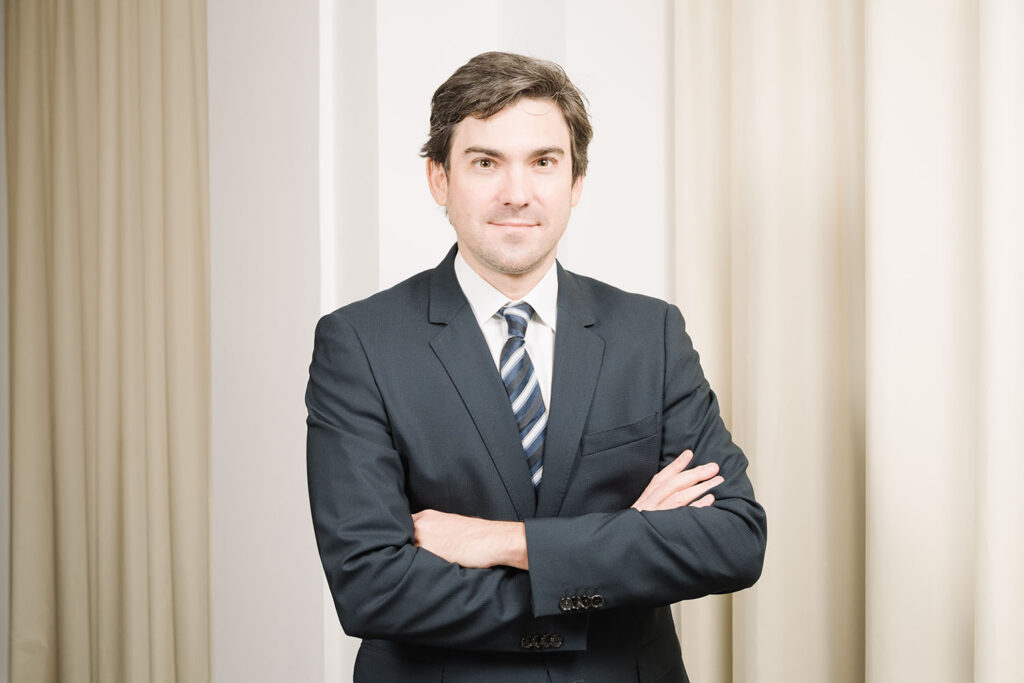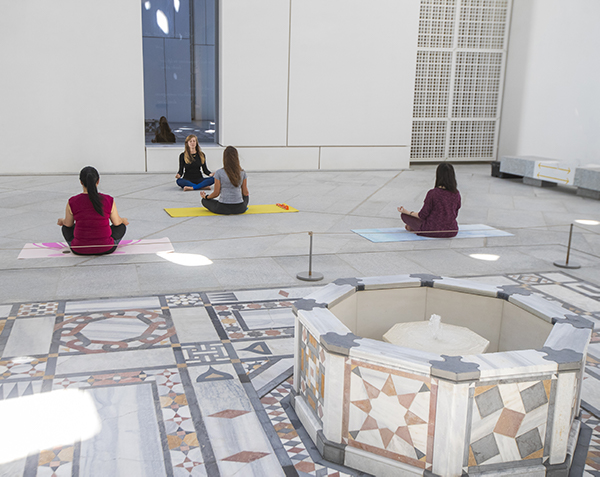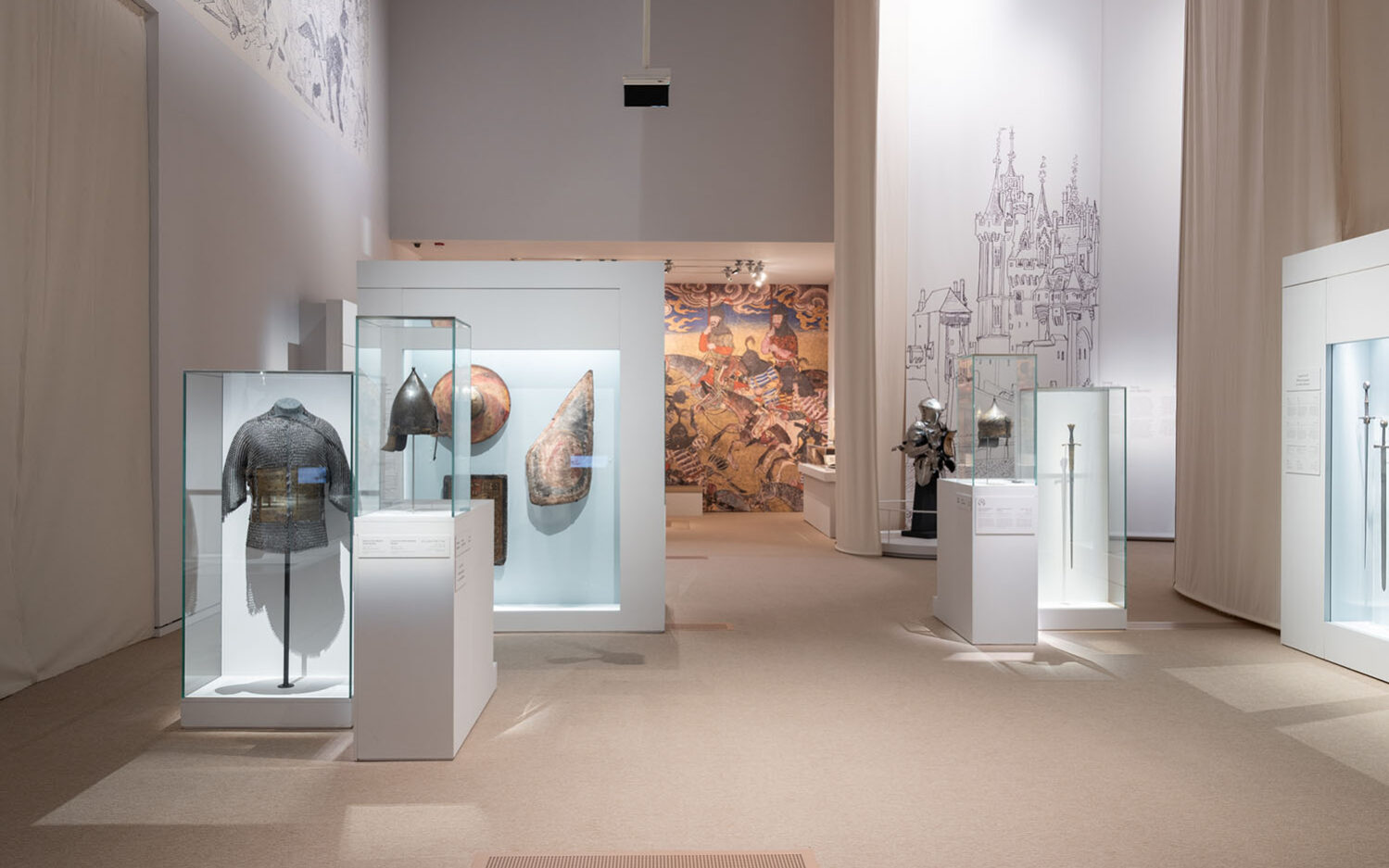As a result of the pandemic, most cultural institutions have had to close their doors and adapt their offering to the public, focusing primarily on the digital space. Stéphane-Arnaud Roisin, Deputy CEO of France Muséums, an international museums consultancy, talks to The Choice about the major changes occurring in the way we engage with culture.
What led to the formation of France Muséums, and what is its vision?
France Muséums was formed in 2007 to work towards the creation of the first universal museum of the 21st century in the Arab world, Louvre Abu Dhabi. Its cultural consultancy services cover planning, design, production and support, and their deployment in various different missions. It’s an adventure that will continue until 2030, and includes the management of loans from French collections, training, producing temporary exhibitions, innovation and support for the visitor experience. Our aim is to harness our know-how and network, which is unique in the world, and to apply the expertise to other projects.
The current crisis will create opportunities to look again at the place that museums and heritage occupy at the heart of our societies.

Our world is facing an unprecedented crisis that affects many sectors of the economy, including culture. What will be the visible – and invisible – consequences for museums and heritage sites?
We have to pay tribute to all the people who are keeping these organisations going, even though some have had to close their doors to the public. The effects of the health crisis are really multifaceted, and their impact depends on whether an institution is in the private or public sector, and whether it is known internationally or only locally. The effects on these organisations, their employees and their visitors are extremely varied, and the degree of vulnerability of these institutions is an important factor. To emerge from this crisis in good shape, they will need to pay more attention in the years ahead to their local and regional audiences, and to come up with business models that are more sustainable, both financially and in terms of competitiveness. A closer look at visitors’ expectations will also be needed, because a lot of institutions concentrate far more on what they can supply – rather than on consumer demand. The current crisis is clearly a damaging one, for people and budgets alike. But it will also create opportunities to look again at the place that museums and heritage occupy at the heart of our societies.
Were digital strategies being pursued in museums before the crisis, or has it simply accelerated their development?
Some digital features existed already, but the crisis has sped up the transformation of certain practices:
- Putting collections and cultural content online. For the past 20 years or so, there have been moves toward the idea of ‘open content’, which means that works should be shared, rather than being owned by a single institution. The New York’s Metropolitan Museum of Art and London’s National Gallery are already doing this, although their work has not been publicized. But they are precursors, as there is a real desire today among cultural institutions to digitize their collections in high definition or 3D, to build a deeper relationship with visitors, to display their works and to connect those different works together. And this move toward digitization has been accelerated by the crisis.
- A new way of positioning a digital offering in-situ. Multimedia in museums dates back to the 1990s with the arrival of screens, audio and both virtual and augmented reality. Today, those services are no longer restricted to the most famous institutions. In fact, when it comes to online offerings, people can now make virtual museum visits that are extremely rich in content and that can reproduce the physical building on screen. Reinventing a museum in this way creates a close relationship with the visitor.
- Cultural institutions want to position themselves beyond the limits of their physical walls, so that visitors can create links between different organisations (such as exhibitions that tour internationally, partners, etc.). The third dimension is the virtual site, the digital platform. It’s a new way of looking at things, a new reading that goes ‘beyond the walls.’
Online offerings only make sense if they provide a genuine interaction with the museum and everything beyond its walls. It’s a way of enabling audiences who cannot visit a particular location to enjoy the benefits of its collections.
Today, how can an online exhibition be brought to life?
There is a wealth of digital offerings. But the real question is about the narrative, and the coherence within these offerings, the physical space visited by the public, and the museum’s attitude to what happens beyond its four walls. These three issues can be interconnected, rather like an ecosystem. But going digital only makes sense if it gives people a new reading of what the museum has to offer. Some organisations have totally understood that, and have aligned their online policy with the main narrative of the museum, which enables them to offer even more to their online audiences. I think that the live guided tours of the Vuitton Foundation and the Louvre have been hugely successful. They demonstrate clearly that having a lively, authentic and personalized experience is absolutely key. Online series are also very good for explaining collections and revealing what happens behind the scenes. American museums have totally understood this, with the Smithsonian’s ‘Meet the Artist’ videos being just one example. Meanwhile, there are podcasts – like at the Centre Pompidou –, games and MOOCs that use a collection as a prism through which we can look at a variety of topics such as management, the transformation of our society’s relationship with sustainability, and diversity. However, there is also a risk of getting lost in this profusion of digital tech. All this makes it ever more important for a museum to have its own narrative, to highlight its differentiating features, and to treat the online audience as part of its ecosystem.
Culture is an essential asset. Being able to access it — and not just from a computer — is good for our health
In your view, which technologies have the biggest impact on the visitor experience?
Two key technologies have been successful. The first is the immersive type, like those created by Japanese firm teamLab with its projections, a video-based mapping of major structures where the visitor’s movements modify what is projected onto the walls in real-time. The second type involves creating an interaction with the visitor. Your behavior can change the position of a given character, who can move, gesture to you… the esthetics are partly conditioned by your own position. This kind of technology ranges from virtual reality to the ways of personalizing someone’s tour of a museum space.
Which of the changes caused by Covid-19 will be for the long term, in your opinion?
I think the aspects that involve the museum’s narrative, the storytelling, the personalization and the interaction with the visitor will all need to be developed. There is huge scope for enriching the cultural offering, and it’s easy to see two other major drivers for this. The first will be to look more closely at the durability of operating models in the museum and heritage sector, both financially and in terms of how compatible they are with sustainability. Studies are already being carried out into the management of temperature and humidity so that the environmental impacts of these systems can be limited, without compromising the safety of the works. The Louvre Museum has said it is stepping up its strategy for these issues, and I think that it’s a feature that will become more popular internationally.
It’s also important not to forget the impact that culture has on people’s wellbeing. We have to get back to basics. Museums need to preserve works, but they also have to bring happiness, joy and wellbeing. Louvre Abu Dhabi has developed a series of well-being opportunities for its visitors including kayaking or yoga under Jean Nouvel’s dome. We can already see relationships being created between certain cultural institutions and hospitals, supporting their experts in the fields of psychology and psychiatry.

Culture is an essential asset. Being able to access it — and not just from a computer — is good for our health. For me, being able to read, to watch a play in a theater, or to visit a museum are among the things that give meaning to life.
License and Republishing
The Choice - Republishing rules
We publish under a Creative Commons license with the following characteristics Attribution/Sharealike.
- You may not make any changes to the articles published on our site, except for dates, locations (according to the news, if necessary), and your editorial policy. The content must be reproduced and represented by the licensee as published by The Choice, without any cuts, additions, insertions, reductions, alterations or any other modifications.If changes are planned in the text, they must be made in agreement with the author before publication.
- Please make sure to cite the authors of the articles, ideally at the beginning of your republication.
- It is mandatory to cite The Choice and include a link to its homepage or the URL of thearticle. Insertion of The Choice’s logo is highly recommended.
- The sale of our articles in a separate way, in their entirety or in extracts, is not allowed , but you can publish them on pages including advertisements.
- Please request permission before republishing any of the images or pictures contained in our articles. Some of them are not available for republishing without authorization and payment. Please check the terms available in the image caption. However, it is possible to remove images or pictures used by The Choice or replace them with your own.
- Systematic and/or complete republication of the articles and content available on The Choice is prohibited.
- Republishing The Choice articles on a site whose access is entirely available by payment or by subscription is prohibited.
- For websites where access to digital content is restricted by a paywall, republication of The Choice articles, in their entirety, must be on the open access portion of those sites.
- The Choice reserves the right to enter into separate written agreements for the republication of its articles, under the non-exclusive Creative Commons licenses and with the permission of the authors. Please contact The Choice if you are interested at contact@the-choice.org.
Individual cases
Extracts: It is recommended that after republishing the first few lines or a paragraph of an article, you indicate "The entire article is available on ESCP’s media, The Choice" with a link to the article.
Citations: Citations of articles written by authors from The Choice should include a link to the URL of the authors’ article.
Translations: Translations may be considered modifications under The Choice's Creative Commons license, therefore these are not permitted without the approval of the article's author.
Modifications: Modifications are not permitted under the Creative Commons license of The Choice. However, authors may be contacted for authorization, prior to any publication, where a modification is planned. Without express consent, The Choice is not bound by any changes made to its content when republished.
Authorized connections / copyright assignment forms: Their use is not necessary as long as the republishing rules of this article are respected.
Print: The Choice articles can be republished according to the rules mentioned above, without the need to include the view counter and links in a printed version.
If you choose this option, please send an image of the republished article to The Choice team so that the author can review it.
Podcasts and videos: Videos and podcasts whose copyrights belong to The Choice are also under a Creative Commons license. Therefore, the same republishing rules apply to them.





